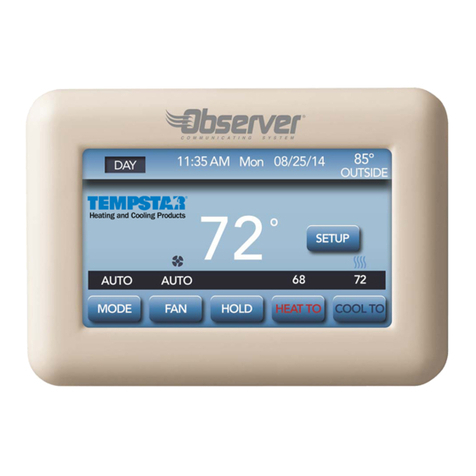7
616 01 1019 01
highlight suggestions which will result in enhanced
installation, reliability, or operation.
Introduction
The Observer®communicating system consists of several
intelligent communicating components which includes the
Observer®Wall Control, and Observer System HVAC
equipment such as, variable speed furnace or fan coil,
2-stage AC or HP, which continually communicate with each
other via a four-wire communication bus. Commands, oper-
ating conditions, and other data are passed continually
between components over the communication bus. The res-
ult is an enhanced level of comfort, versatility, and simplicity.
All communicating furnaces or fan coils are variable-speed
and multi-stage for maximum flexibility, efficiency, and com-
fort. They support controlled humidification, dehumidification,
and air quality control. Either an Observer communicating, or
a standard 24VAC controlled outdoor unit may be used.
When using conventional, single-stage outdoor units, the
communicating furnace (single-stage AC unit), or fan coil
(single-stage HP) provides the 24 volt signals needed to con-
trol them. Add the accessory daughter board to the system
to control other types of conventional outdoor units. All sys-
tem components are controlled through the wall mounted
Observer Control, which replaces the conventional thermo-
stat and provides the homeowner with a single wall control
for all features of the system.
The Observer Communicating Control with Wi-FiRnetwork
compatibility allows connection of this system to the Internet
viaahomeWi-Fi
Rnetwork. See the Owner's Manual for in-
formation on connecting the wall control to the home Wi-Fi






























